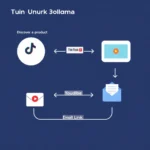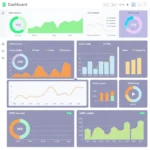Multi-Channel Affiliate Strategies
Affiliate Marketing and Multi-Channel Affiliate Strategies That Actually Work (and Won’t Make You Cry)
Alright, digital hustlers, aspiring internet moguls, and anyone still trying to explain to their grandma what “affiliate marketing” is, gather ‘round. The world of affiliate marketing isn’t just alive and kicking in 2025; it’s doing the cha-cha across every digital platform you can think of. If you’re still stuck in the “I’ll just slap a link in my blog and pray” era, I’ve got news: the future is multi-channel affiliate strategies, and it’s as wild as a TikTok dance challenge at a YouTube convention.
Let’s break down how combining blogs, social media, email, and video content can turn your affiliate efforts from “meh” to “internet profit success” (and maybe even let you buy that fancy coffee instead of brewing another sad cup at home).
Why Multi-Channel Affiliate Strategies Are the Future
What if your dream customer is scrolling TikTok at lunch, reading blogs on the train, checking emails before bed, and indulge on YouTube when they should be working. If you’re only showing up on one channel, you’re basically the digital version of a one-hit wonder, catchy, but forgettable. Multi-channel affiliate strategies mean you’re everywhere your audience is, all the time, gently (or not-so-gently) nudging them toward that sweet, sweet affiliate link. Why settle for one slice of the pie when you can have the whole bakery?

Key reasons to go multi-channel:
• Broader reach: Meet your audience where they are, on blogs, YouTube, TikTok, Instagram, and in their inbox.
• Higher engagement: Different people prefer different platforms. Some read, some watch, some scroll, some click.
• More touchpoints: The more times someone sees your recommendation, the more likely they are to trust you and buy.
• Better attribution: Multi-channel attribution lets you see what’s actually working (and what’s just eating up your time).
Social Media Affiliate Marketing. Where the Fun (and Money) Is

If you’re not leveraging social media for affiliate marketing, you’re basically showing up to a costume party in a plain white tee. Social media affiliate marketing is where the action is, especially on platforms like TikTok, Instagram, and YouTube.
TikTok: The Viral Goldmine
TikTok isn’t just for Gen Z dance-offs. It’s a powerhouse for short-form, high-converting affiliate content. Here’s how to win:
• Link-in-bio tools: Use Linktree or similar, to get around TikTok’s single-link limitation.
• Promo codes: Share unique codes in your videos, captions, or even comments to track conversions and incentivize purchases.
• Cross-platform funnels: Tease a product on TikTok, then guide viewers to your YouTube or blog for the full scoop and more affiliate links.
Example: A beauty influencer drops a 30-second “get ready with me” TikTok, flashes a discount code, and tells viewers to check her YouTube for the full tutorial and all the affiliate links. That’s multi-channel magic.
YouTube. The Long-Form Trust Builder
YouTube is where you build deeper trust and can go full infomercial (without the cheesy music). Here’s your playbook:
• Product reviews and tutorials: Go in-depth, show real results, and add affiliate links in the description. • Playlists: Group related videos to keep viewers indulging in your content (and clicking your links).

• YouTube Shorts: Quick, TikTok-style videos to highlight product features and drive traffic to your main reviews.
• Embed videos in blog posts: Double-dip by adding your videos to your blog for extra SEO juice and more views.
Pro tip: YouTube lets you stack multiple affiliate links in your video descriptions, no “link in bio” drama here.
Instagram: Visual Storytelling
Instagram Reels, Stories, and in-app shopping features make it a prime channel for affiliate product sales. Use swipe-up links (if you’ve got the clout), shoppable posts, and visual storytelling to drive conversions.
Email Campaigns for Affiliates. The Secret Weapon

Email is the OG of digital marketing, and guess what? It still works, if you do it right.
Why Email Works
• Direct access: You’re in their inbox, not fighting algorithms.
• Personalization: Segment your list, personalize your offers, and watch those conversions climb.
• Nurturing: Use sequences to guide subscribers from “who are you?” to “take my money!”.
Winning Email Sequences
1. Welcome email: Set the tone, introduce yourself, and tease what’s coming.
2. Pain points: Talk about the problems your audience faces (and how you’ve been there too).
3. Solutions: Offer genuine solutions, naturally weaving in affiliate products.
4. Value-packed follow-ups: Share tips, stories, and exclusive deals to keep them engaged.
5. Exclusive offers: Send out time-limited discounts or bonuses to trigger FOMO.
Pro tip: Don’t spam. Segment your list and send relevant offers, or you’ll end up in the dreaded “Promotions” tab, or worse, the trash.
Video Content Strategies. The Conversion Multiplier
If a picture is worth a thousand words, a video is worth a thousand clicks. Video content is dominating affiliate marketing, and for good reason: it’s engaging, authentic, and converts like wildfire.
What Works in Affiliate Video Content
• Authenticity: Be real. Share honest opinions, even the drawbacks, because this helps to build trust.

• Storytelling: Share your personal experience with the product. People want to see how it fits into real life.
• Short and sweet: Keep videos 2-5 minutes for max engagement, or go even shorter for TikTok and YouTube Shorts.
• Clear CTAs: Tell viewers exactly what to do next, click the link, use your code, subscribe for more.
• Mobile optimization: Most people watch on their phones. Use vertical formats and big, readable text.
Types of Videos That Convert
• Product reviews: Honest, detailed, and relatable.
• Unboxings: Show the real deal, not just stock photos.
• Tutorials: Teach something useful and naturally recommend products.
• Comparison videos: Help viewers decide between options (and include affiliate links for all of them).
Fun fact: Video content increases conversion rates by 49%, so if you’re camera-shy, it might be time to face your fears (or hire a charismatic friend).
The Blog + Social Media Combo. Your Affiliate Powerhouse
Here’s where the magic happens. By combining your blog with social media platforms like YouTube or TikTok you create a synergy that’s greater than the sum of its parts.
Why This Combo Works
• Appeal to all learning styles: Some folks love reading, others prefer watching. Serve both.
• Boost SEO: Embedding videos in your blog increases time on page, dwell time, and can improve your search rankings.
• Cross-promotion: Drive blog readers to your YouTube channel and vice versa, increasing your total audience and the number of affiliate clicks.
• Multi-touchpoint persuasion: The more places someone sees your recommendation, the more likely they are to trust and buy.
Example: Write a detailed blog post reviewing a product, embed your YouTube video for those who prefer to watch, and share a quick TikTok teaser that links back to the blog. Now you’re covering all the bases and maximizing your affiliate earnings.
Multi-Channel Attribution. Know What’s Actually Working
With so many channels in play, how do you know what’s driving sales? Enter multi-channel attribution the secret sauce for internet profit success.
What Is Multi-Channel Attribution?

It’s the process of tracking and assigning credit to every channel that played a role in a conversion. Maybe someone saw your TikTok, read your blog, and finally clicked your affiliate link in an email. Multi-channel attribution helps you see the whole journey, not just the last click.
Why It Matters
• Optimize your efforts: Double down on what’s working, cut what’s not.
• Fair compensation: Know which affiliates and channels deserve the most credit (and commissions).
• Smarter spending: Allocate your budget to the channels that actually move the needle.
How to do it: Use UTM parameters, tracking pixels, and analytics tools to follow your audience across platforms.
Real-World Wins. Multi-Channel Affiliate Campaigns in Action
Let’s get inspired by some big players who’ve nailed multi-channel affiliate strategies:
• Amazon Associates: Partnered with influencers across social media to promote products, using unique tracking links to measure impact. Result? Massive visibility and sales across categories.
• Rakuten: Combined paid ads, email marketing, and social media for a cross-channel blitz that boosted brand reach and engagement.
• Shopify: Leveraged a network of bloggers, YouTubers, and email campaigns to rapidly scale their user base.
The takeaway? Multi-channel isn’t just a buzzword it’s the blueprint for affiliate domination.
How to Build Your Own Multi-Channel Affiliate Empire
Ready to level up? Here’s your step-by-step game plan for multi-channel affiliate strategies:
1. Pick Your Channels Wisely
Don’t try to be everywhere at once (unless you’re a robot). Focus on the platforms your audience actually uses:
• Blog/website (your home base)
• YouTube (for long-form video)
• TikTok/Instagram (for short-form, viral content)
• Email (for nurturing and direct offers)
2. Create Platform-Specific Content
• Blog: In-depth reviews, tutorials, listicles, and guides.
• YouTube: Product reviews, unboxings, tutorials, and vlogs.
• TikTok/Instagram: Quick demos, behind-the-scenes, and promo code reveals.
• Email: Value-packed newsletters, exclusive deals, and follow-up sequences.
3. Connect the Dots
• Embed YouTube videos in your blog posts.
• Link from TikTok to your blog or YouTube channel.
• Drive email sign-ups from your blog and social channels.
• Use consistent branding and messaging across all platforms.
4. Track Everything
• Use UTM parameters on all affiliate links.
• Monitor conversions by channel.
• Test different content types and offers to see what works best.
5. Optimize and Scale • Double down on high-performing channels.

• Repurpose content across platforms (turn a blog post into a video, a video into a TikTok, etc.).
• Collaborate with other creators to expand your reach.
The Not-So-Secret Sauce. Consistency, Authenticity, and Fun

Look, the internet is full of people trying to make a quick buck. The ones who actually succeed (and keep succeeding) are those who show up consistently, keep it real, and actually have fun with it. People can smell a fake endorsement from a mile away, so only promote products you actually believe in. Let your personality shine through.
Remember: Multi-channel affiliate strategies aren’t about spamming every platform with the same tired pitch. It’s about creating a cohesive, engaging experience that meets your audience wherever they are and gives them a reason to trust you (and click that link).
The Bottom Line. Internet Profit Success Awaits
Affiliate marketing in 2025 is a multi-channel game. If you want to win, really win, you need to be everywhere your audience is, with content that entertains, educates, and converts. Combine blogs, social media, email, and video to create a web of influence that’s impossible to ignore.
So go forth, experiment, and don’t be afraid to get a little weird with it. The future of affiliate marketing belongs to those who dare to do more than just drop a link and hope for the best.
Now, if you’ll excuse me, I’ve got about 17 tabs open, a video to film, an email to write, and a TikTok dance to learn. Multi-channel affiliate strategies, here we come!